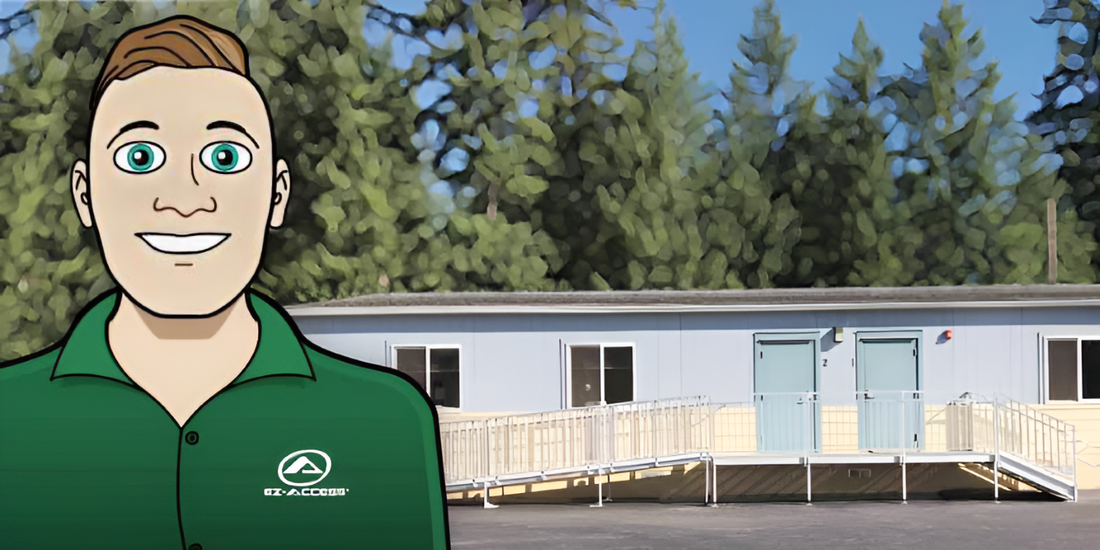When talking about equal access to education, the first thing that jumps into a person’s mind usually isn’t the physical building.
As simple as it sounds, physical access is vital to education. We asked our expert, Paul, about the best way to assess and install accessibility solutions to gain some insight on how to provide a learning environment that is safe and easy to access. Paul works strictly on school projects, making his in-depth field experience a key resource to ensure the success of each tailored access solution. See how Paul answered the questions many of us are asking about school accessibility.
What to Know About School Accessibility
What are the most common questions you get during your first interaction for a school accessibility project?

- How soon can you get the product to me once I say yes? Stock items ship 24-48 hours after the purchase order is received.
- Can I do the installation myself? We recommend professional installation, however, our systems are completely modular with universal components, making installation a fairly easy process. We also have in-depth instruction manuals that can be followed step by step.
- Do you have any ramps of yours near me that I can look at? We have ramp systems installed all across the nation, however, our website features several project examples that can be viewed anytime, anywhere.
What is the most innovative accessibility solution you’ve seen installed at a school?
- In the realm of custom innovation, we recently manufactured a two-story ramp system for a school in Virginia, and as far as standard capabilities are concerned, innovation ran rampant through a significantly large local project that was just completed that consisted of 121 platforms, 9 ramp runs, and 18 sets of steps. Many of these platforms were connected together to create a decking systems that spanned three portable classrooms.
How many schools have you worked with?
- So far, I have worked with about 30-40 school districts since the decisions and interactions are usually at the district level. I would guess that most of the ramp systems that we do for schools are placed at elementary schools – primarily providing access to the portable classrooms they have on the school grounds.
What are the most common challenges you see with the school projects?
- Timing and getting the dimensions exactly right. But, we overcome those challenges as best we can by having the materials in stock and ready for shipment as soon as possible. Also, by having a contractor complete a site evaluation to verify the measurements, we can ensure the school receives exactly what they need from us!
How can a school district assess their accessibility in a streamlined way?
- If they have existing ramps, they need to take a look at the integrity and safety of the current access solution. If the ramp system or even stairs are made of wood, they should probably be replaced due to several factors regarding wood being a hazard to students and faculty. If there are only stairs that lead into the school or portable classroom, the school district should really take access into consideration and replace the stairs with a ramp system so that access can be offered to all students and faculty, no matter their level of mobility.
- If they have new portables and are searching for the best access solution, they should assess their options and take maintenance, installation time, safety, cost, longevity of the solution, etc. into consideration.
- Either way, when they do decide to implement a new access solution, we recommend having a specialized contractor come out to visit the potential location of the ramp system and do a site assessment/evaluation. The contractor would need to take some measurements such as the rise and be able to provide information such as the layout dimensions – a task that the school maintenance employees are most likely not specifically trained for.
How often should a school assess their accessibility?
- Once or twice a year in my opinion. Specifically, before and after the winter season since the weather can really decompose wood quickly and wood ramps can get really slippery with rain/snow. They should look for structural instability, cracks, leaning, rot, exposed nails, holes, mold, etc.
What time of year should schools look to make improvements to accessibility?
- Most schools wait until summer break or even winter break to complete any access improvement projects. However, our products can be installed in half of a day to a day, so any time of year is actually achievable for making improvements to accessibility. A system can easily be installed over a weekend when school is not in session.
What building trends have you seen recently in schools across the United States?
- Up until about 5-10 years ago, the trend was to continue using wood ramps as a means of access and replacing unsafe, deteriorating ramps with new wood ramps. But, now the vast majority of schools are turning to aluminum ramps/steps when making replacements.
How do accessibility needs differ across regions of the United States? Do they differ?
- We have seen that needs differ a bit by population size. The more growing/suburban an area is, the more common portable classrooms are. Whereas rural areas don’t usually use them. Therefore, more of our ramp systems will be used in populous, growing areas. However, the fundamental need for accessibility is seen across the nation. If there’s an elevated barrier, it needs to be solved so that individuals of all abilities can gain access.
We hope these answers from Paul help you make decisions as you talk to administrators about accessibility for each school.
Our customer service team is eager to help you get the process started for your next project.
Feel free to reach out to us with any additional questions!

